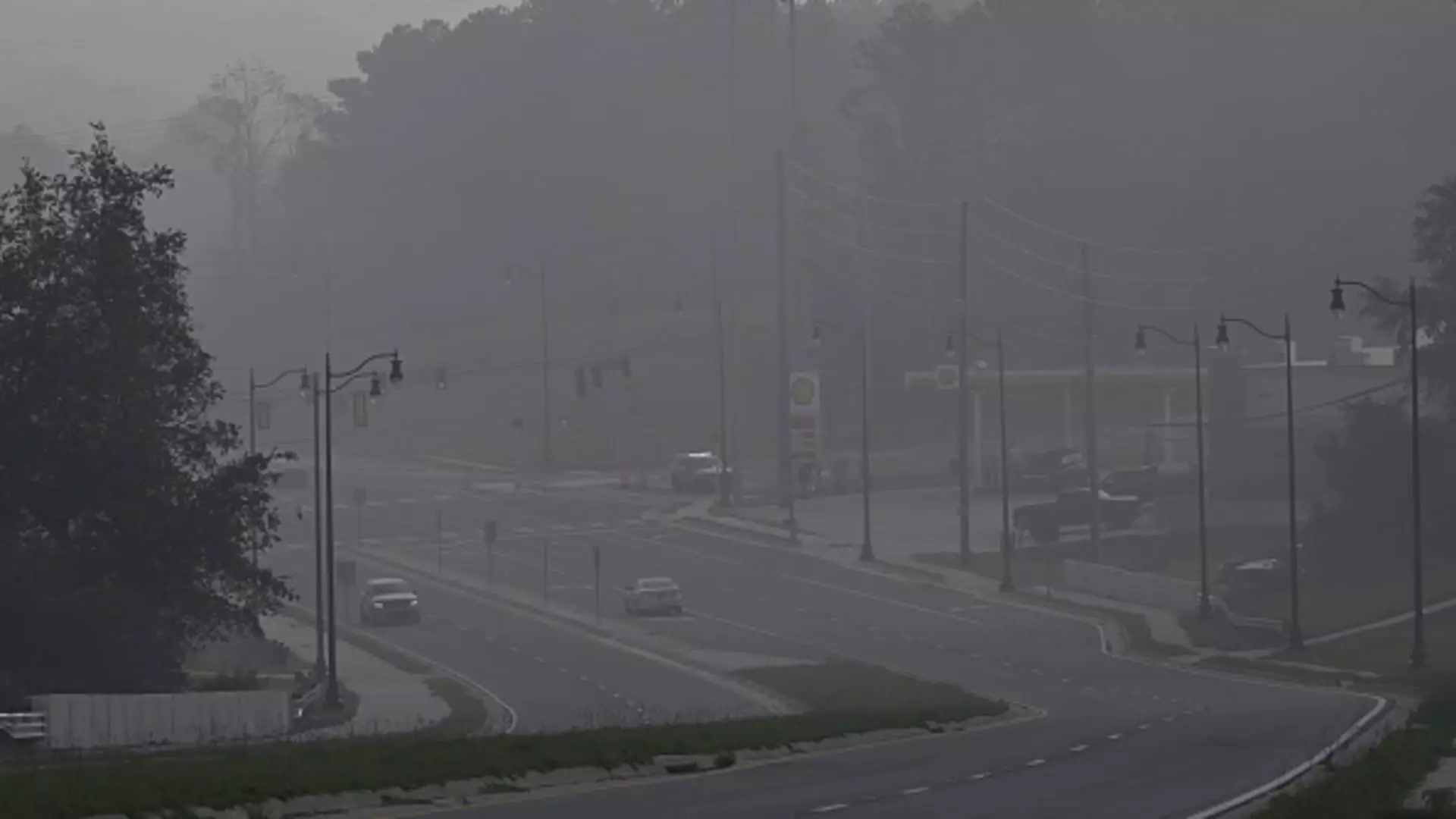In the early hours of Sunday, a fire broke out at the BioLab facility in Conyers, Georgia, igniting a series of events that have placed residents in and around Atlanta on high alert. As rumors of a dire situation spread, officials have uncovered alarming air quality reports, with elevated levels of chlorine detected in the atmosphere. This incident has effectively highlighted the risks posed by chemical facilities and their potential impact on surrounding communities, raising concerns about safety protocols and emergency response mechanisms.
The Georgia Emergency Management and Homeland Security Agency has reported that air quality monitoring in the vicinity of the chemical facility revealed concerning levels of chlorine gas. Following the containment of the fire, officials are adapting their strategies to mitigate the consequences, including issuing a shelter-in-place directive for Rockdale County. With a population of approximately 93,570, the mandate aimed to protect residents from potential health hazards associated with exposure to chlorine compounds.
As residents prepare for what has been described as a “haze and chlorine odor” to permeate through metro Atlanta, there are genuine concerns regarding public health. Chlorine is a potent chemical that can cause significant respiratory issues, particularly among vulnerable populations such as individuals with pre-existing heart or lung conditions. The emergency management agency has warned those affected to minimize their exposure to the toxic atmosphere, advising residents to keep windows closed and air filters operating.
Social media platforms have become a battleground for community discourse, with frustrated residents voicing their anxieties and experiences. Comments of distress have been widespread, highlighting symptoms ranging from eye irritation to severe respiratory issues, raising alarms about the adequacy of both communication and management during this crisis. Locals have expressed a feeling of helplessness as they grapple with conflicting messages from authorities, which only deepen their anxieties.
Thomas Chastain, an area resident, voiced the pertinent frustration experienced by many. As someone who works across the street from the BioLab plant, his personal health concerns, coupled with reports of others suffering from chest pain and breathing difficulties, present a harrowing picture of the situation. “Every day, we receive conflicting advisories,” he stated, emphasizing the confusion stemming from varied reports about the safety of the environment. With increasing numbers of individuals expressing a desire for the removal of the facility, it seems that the trust between the community and chemical producers is being tested.
The environmental impact of this incident cannot be understated. Emergency officials predict that as winds shift throughout the week, contaminant levels could rise and potentially disperse over a more extensive area, affecting larger segments of the population. Current assessments classify the chlorine levels as “safe,” yet many residents remain skeptical, questioning how reliable these measurements are, especially when living in the vicinity of a hazardous material facility.
The incident begs an introspective examination of regulatory practices governing chemical plants. In light of the apparent lapse in safety measures, community advocates and environmental activists are increasingly calling for enhanced oversight. Heightened scrutiny may lead to reassessments of safety standards that ensure communities are not left vulnerable during incidents that can lead to chemical exposure and public health crises.
Additionally, the public discourse surrounding these issues underscores a crucial need for improved communication strategies in emergencies. The ability to relay clear and consistent information is paramount, especially when lives and public health hang in the balance. An efficient emergency response system should not only provide updates but reassure the public with clear guidelines about minimizing risk and addressing their health concerns.
The chemical fire at BioLab has illuminated the precarious relationship between industrial operations and community well-being. As Atlanta braces for the fallout, residents are faced with uncertainty regarding their air quality and health. This incident serves as a crucial reminder of the need for cohesive communication, rigorous safety standards, and community resilience in the face of industrial accidents. The road to public trust is long but traversable, provided stakeholders engage transparently and prioritize the health and safety of the community above all else.


Leave a Reply